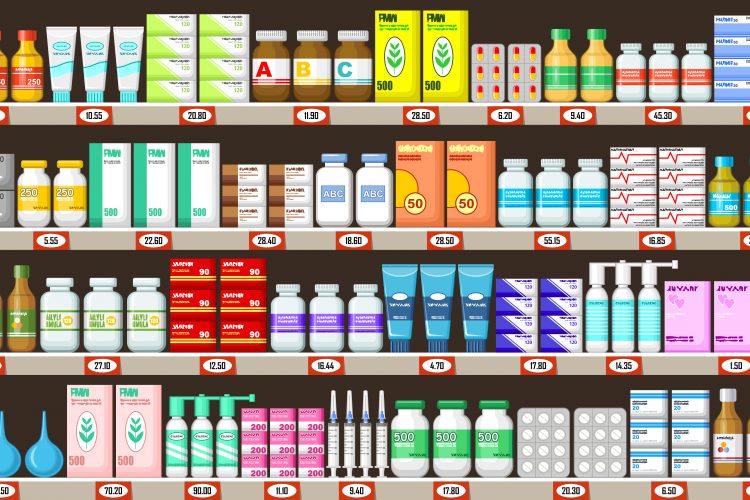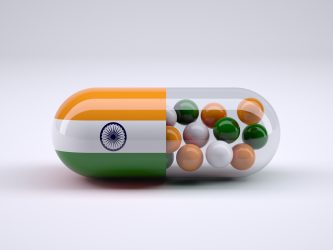COVID-19 update: coronavirus and the pharmaceutical supply chain
Posted: 1 April 2020 | Hannah Balfour (European Pharmaceutical Review) | No comments yet
With concerns rising about medicine availability during the global COVID-19 coronavirus pandemic, European Pharmaceutical Review explores how the pharmaceutical supply chain is faring.


With the COVID-19 pandemic affecting industries across the globe, European Pharmaceutical Review’s Hannah Balfour explored the latest reports and spoke to J.P. Duffy, a Reed Smith Partner, to assess how the outbreak is affecting the global pharmaceutical supply chain.
Supplying the supply chain
The impact of China and India
Among the problems for pharmaceutical supply chains during this pandemic are the restrictions and impact of COVID-19 on two of the largest global producers of active pharmaceutical ingredients (APIs) and generics: China and India.
Since the outbreak started in China and lockdowns were imposed, supply from their manufacturing facilities has reduced. The true extent has been difficult to quantify as limited numbers of the typical workforce have been able to return to work. A recent letter sent by Medicines for Europe revealed that the Chinese powers expect large manufacturing facilities to be fully operational soon, although smaller producers may continue to struggle for some time.
Duffy stated that “most companies feel that they are relatively well positioned to weather short-term disruption. This is because many publicly traded companies have six months to a year of stockpiles; however, if restrictions continue for an extended period of time, especially if people in China cannot get back into the factories to work, eventually supply chain shortages will start to disrupt everyone.”
Reports suggest a range of possible effects, including:
- generic drug producers who source APIs from China are likely to face supply chain issues if the outbreak continues
- short-term scarcities affecting certain products – one such shortage has already been announced by the US Food and Drug Administration (FDA)1
- manufacturers of branded pharmaceuticals may see a shift in their demand, both as antiviral use rises and as other chronic conditions are left untreated by patients due to concerns over exposure to COVID-19.
A second roadblock for some pharmaceutical manufacturers is that “India has restricted the export of 26 active pharmaceutical ingredients… which represents about 10 percent of their export capacity,” according to FDA Commissioner Stephen Hahn. As the contributors of 20 percent of the global generics supply, the decision to restrict exports due to fears of internal supply shortages has far-reaching impacts, particularly on supplies of paracetamol, several antibiotics such as tinidazole and erythromycin, the hormone progesterone and vitamin B12.2


According to reports, the restrictions were imposed because India’s manufacturers rely heavily on imports of their APIs from China. As a result of the lockdowns and closures, slowed production of APIs by the latter resulted in less availability and higher costs for the materials required for generics production. Duffy said the primary reason behind the export restrictions was to prevent domestic shortages in India in the long-term.
When speaking with EPR, Duffy highlighted that: “The US is the largest consumer of pharmaceutical products, accounting for somewhere between 45 and 50 percent of the market. We import more than half of our APIs and finished products. Therefore, it seems logical to think that if disruption in India and China goes on for an extended period of time, it will have to impact the US, as it will the rest of the world.”
Logistics and distribution concerns


Duffy explained that while manufacturing of the products is complicated by COVID-19, a further concern is disruption in product delivery: “This is not just pharmaceuticals, it is everything. The huge restrictions on population movements in Europe make distribution and shipping a problem. Let us look at an example: say you start with the manufacturing of an API in one country that then has to be moved to another jurisdiction to be manufactured into a finished product or go through several other production stages. You also need pill casings that are made somewhere else. All these elements have to be brought together to manufacture the finished product and then be moved by logistics companies, who, despite their best efforts to keep up with all this, have movement restrictions and worker illnesses placed upon them.
“What I would suspect is that there are going to be several disruptions within the supply chain, such that companies start declaring force majeure, as it becomes a commercial reality that people cannot perform under contracts.”
Force majeure clauses in contracts essentially state conditions under which the performance of a company can be excused or suspended. They can also state that a company is not liable for failing to meet the terms a contract. Force majeure typically applies while the event, such as a pandemic, is impacting the ability of the company to perform; however, Duffy explained: “there is no one standard force majeure clause that is in every contract. Therefore, the scope of what is entitled, what companies can claim and the scope of what your excuse for non-performance might be varies from contract to contract.”
What can pharma do to limit the impact on the supply chain?
Duffy suggested that because of the “incredibly fluid situation… companies need to constantly monitor these issues and assess their possible impact for the immediate future, as well as the more medium- and longer-term impacts. Companies must think around corners and anticipate problems before they become larger immediate issues”.
What can companies actively do aside from monitoring?
Duffy presented two suggestions; first, every company should review their contracts: “look at the global contracts and suss out which ones are going to be impacted by cross-border issues and determine what the force majeure provisions say, both in terms of what you can claim and what others can claim against you. I think the biggest and most important exercise now is to get a grip on what the potential issues are and what the potential exposure is.”
…businesses across several markets are going to be looking at whether it makes sense to have lots of factories in any one market or if they should be attempting to diversify”
The second is to look at the indemnity provisions, which require a party to compensate another company for a loss suffered in which they have some role or in which they have accepted some form of legal responsibility. These could include the provision of financial or legal aid, so Duffy said: “companies need to be looking at those as part of this same exercise, because if someone claims either force majeure or indemnity provisions against them, the business against whom it was claimed might not be able to perform or offer services to another enterprise higher up in the supply chain.”
As a result, Duffy suggests pharma needs to be careful of both the direct supply shortages and the legal situations that COVID-19 could place them in.
Future changes to manufacturing practices
While the effects of coronavirus are overwhelmingly negative, Duffy suggested there could be one positive as a result of COVID-19: that companies may begin to spread production across different markets, limiting the effects of future disruptions: “I think the next six months are going to be extremely interesting because companies are going to have to look at shifting manufacturing from impacted markets to less impacted markets. A few pharmaceutical companies have already released statements saying they are trying to shift manufacturing or compensate for market disruptions by increasing manufacturing elsewhere.”
He suggested this could be problematic in the short-term, as an increasing number of markets are impacted by COVID-19 and the process to establish pharmaceutical manufacturing facilities is lengthy due to the tight regulations and the need for precise capabilities. In order to do this Duffy said that pharma companies will have to use and expand production at existing facilities in other markets. However, “in the long-term enterprises are going to have to diversify out their manufacturing capacity across a number of markets. Where manufacturing is highly concentrated right now, such as in China or India, that is probably not going to be the case in five years.”
Duffy concluded: “I think over the long term, businesses across several markets are going to be looking at whether it makes sense to have lots of factories in any one market or if they should be attempting to diversify by building factories elsewhere.”
Conclusion
While drug shortages due to COVID-19 are so far limited and expected to remain this way in the short term, if the pandemic continues then stockpiles of pharmaceuticals, APIs and other chemicals may decrease, resulting in shortages. A further effect is the added complications for distribution, particularly with population movement restrictions across Europe.
Duffy advises pharmaceutical companies to monitor the evolving situation and ensure enterprises are aware of the clauses of their contracts that may become problematic in the longer term.
References:
- Hahn, S., MD. Coronavirus (COVID-19) Supply Chain Update [Internet]. US Food and Drug Administration (FDA). 27 February 2020. [Cited: 24 March 2020]. Available at: https://www.fda.gov/news-events/press-announcements/coronavirus-covid-19-supply-chain-update
- Duffy, J.P. India restricts drug exports over Coronavirus fears and international arbitration claims are likely to follow [Internet]. Reed Smith. March 2020 [Cited: 24 March 2020]. Available at: https://communications.reedsmith.com/40/3199/march-2020/india-restricts-drug-exports-over-coronavirus-fears-and-international-arbitration-claims-are-likely-to-follow(1).asp
Related topics
Active Pharmaceutical Ingredient (API), Big Pharma, Contract Manufacturing, Distribution & Logistics, Drug Manufacturing, Drug Markets, Drug Supply Chain, Regulation & Legislation, Supply Chain, Viruses
Related organisations
Related drugs
erythromycin, paracetamol, progesterone, tinidazole, vitamin B12









